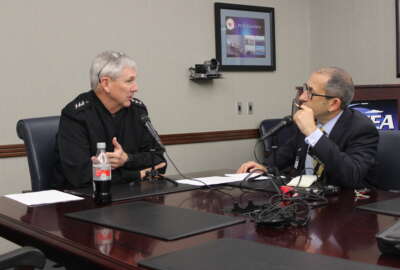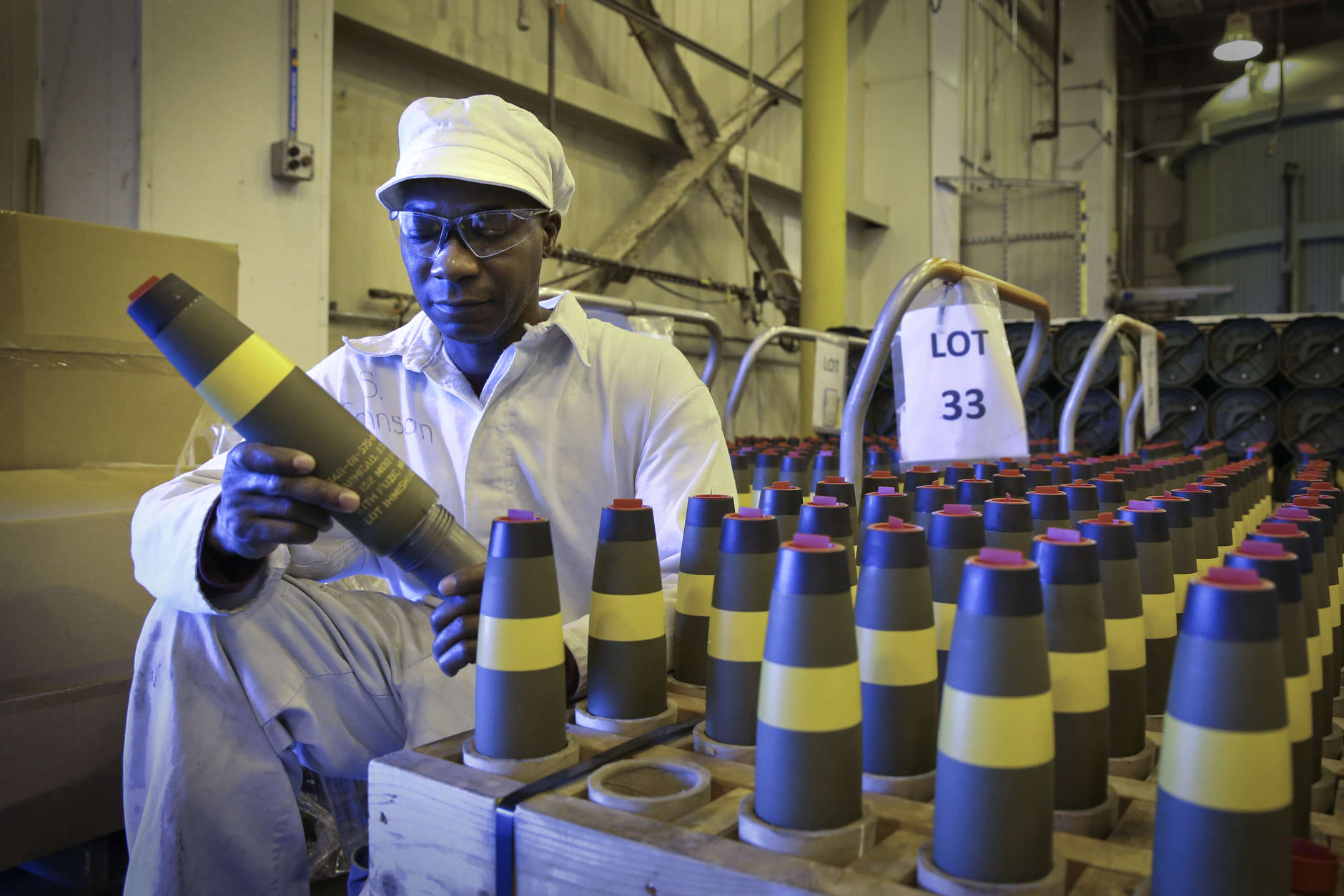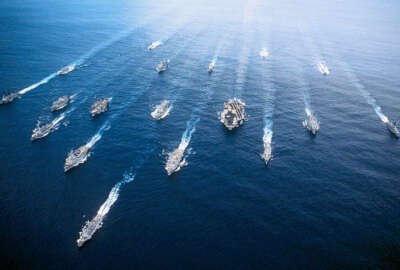
Navy building the future of energetics in Indian Head
Captain Scott Kraft, commander of Indian Head Explosive Ordinance Disposal Technology center, said there’s a need for investment in energetics to build a more...

Naval Surface Warfare Center Indian Head Explosive Ordnance Disposal Technology Division (NSWC IHEODTD) Energetics Manufacturing Department’s Chemical Engineer Amy Luebbering demonstrates the five-gallon Resonant Acoustic Mixer (RAM-5) to Technical Director Ashley Johnson during the RAM-5 facility’s ribbon cutting ceremony, Apr. 30.

The Naval Sea Systems Command’s Explosive Ordinance Disposal Technology Center in Indian Head, Maryland, is working on a strategy for the future of energetics at the Defense Department. Captain Scott Kraft, commander of Indian Head, said there’s a need for investment in energetics to build a more joint, lethal force.
“Energetics is a term that not many people use, but it’s really our calling card,” Kraft said on Agency in Focus: Navy. “I want to unpack that. It includes a lot of things that people may not consider or think about: everything from pyrotechnics to rocket motors to high explosives to torpedo fuel. Basically, anything that is designed to release energy in a way that we want to create an effect. That comes in all shapes and sizes and is used in a multitude of purposes on all sorts of platforms for all sorts of effects. Indian Head is ubiquitous across all that space.”
And that’s why Indian Head is working on its strategy. For one thing, it already has to work with industry to provide all the energetics the military uses. Indian Head, though it does have manufacturing capacity, can’t provide enough energetics for the Navy alone, much less all the services.
That said, Kraft said it can do a lot, and could do more than it is right now. But there hasn’t been a lot of investment in energetics in recent years. In fact, Kraft told the Federal Drive with Tom Temin some of Indian Head’s inventory of energetics dates back to the 1960s and ‘70s.
The strategy Indian Head is developing rests on two foundational ideas. First, energetics are going to be a necessary part of the Navy’s weapon systems for the foreseeable future. It will be a long time before lasers are capable of replacing explosive, or explosively propelled, ordinance. Second, energetics is not a frozen commodity. It can do more than it currently does.
Which is saying something, because it currently does a lot. Kraft said Indian Head takes an intense view of weapons systems delivery, because quite often that delivery itself involves energetics. For example, if a plane drops a bomb, that bomb is obviously an energetic. But under the plane’s wing, where the bomb is attached to the plane, there’s most likely a cartridge-activated device that ejects the bomb from the plane. And that device is also an energetic.
Kraft said there’s a lot of commonalities across the services on energetics like these. That way they benefit from economies and efficiencies. But that still leaves more than 3,000 energetics in Indian Head’s inventory for airplanes alone. And it’s responsible for the design, manufacturing, quality assurance logistics, in-service engineering, support and demilitarization for all of them.
To accomplish that, Indian Head has 16 different industrial complexes, though they may not all be fully in use at any given moment. Kraft said it does have mobilization capacity, which it’s used in the past.
Indian Head also has a workforce of 2100 people that runs the gamut from administrators and physicists to technicians and operators. Kraft called it a “tremendous degree of education, expertise [and] experience.”
“One of the things that’s really remarkable about Indian Head and its workforce is that it’s not uncommon to find people that have been here for 30, 40 years,” Kraft said. “They love what they do, it’s very niche, it’s very critical, they’re very good at it, and we want to keep them for as long as we possibly can. “
Copyright © 2025 Federal News Network. All rights reserved. This website is not intended for users located within the European Economic Area.
Daisy Thornton is Federal News Network’s digital managing editor. In addition to her editing responsibilities, she covers federal management, workforce and technology issues. She is also the commentary editor; email her your letters to the editor and pitches for contributed bylines.
Follow @dthorntonWFED
Related Stories






